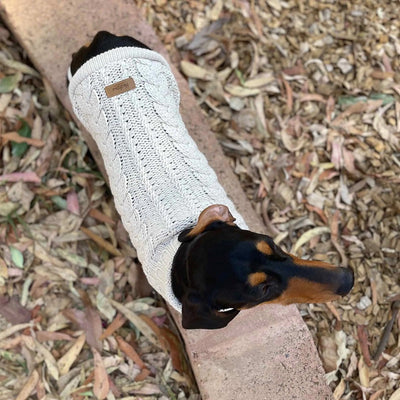
Transforming your aquarium from ordinary to extraordinary is easier than you may think. With the right rocks, driftwood, and substrate aquascaping techniques, you can create a captivating underwater landscape that will mesmerise both you and your fish.
Choosing the perfect rocks for your aquarium is essential. Not only do they add aesthetic appeal, but they also provide hiding places and shelter for your fish. From smooth river rocks to striking volcanic stones, the options are endless. Pairing these rocks with carefully selected pieces of driftwood creates a natural and realistic environment for your aquatic pets to thrive in.
Substrate aquascaping techniques, such as layering different types of gravel or sand, add depth and texture to your aquarium. This not only enhances the visual appeal but also encourages natural behaviours in your fish, such as burrowing or sifting through the substrate.
In this article, we will guide you through the process of enhancing your aquarium with rocks, driftwood, and substrate aquascaping techniques. Discover the endless possibilities of creating a stunning aquatic masterpiece that will elevate your aquarium from ordinary to extraordinary.
Benefits of enhancing your aquarium with rocks, driftwood, and substrate
Enhancing your aquarium with rocks, driftwood, and substrate offers numerous benefits for both you and your aquatic pets. Firstly, it adds visual interest and creates a more natural and realistic environment. A well-designed aquascape can be a stunning focal point in any room, providing a sense of tranquility and relaxation. Additionally, incorporating rocks and driftwood into your aquarium provides hiding places and shelter for your fish, allowing them to exhibit natural behaviours and reducing stress.
Aquascaping techniques and principles are essential to achieving a balanced and visually appealing aquarium. By applying basic design principles such as the rule of thirds, focal points, and the use of negative space, you can create a harmonious and visually stunning aquascape. Understanding these principles will help you create a cohesive and balanced underwater landscape that is both pleasing to the eye and beneficial for the inhabitants of your aquarium.
What are the techniques and principles of aquascaping?
Aquascaping is the art of arranging aquatic plants, rocks, and other decorative elements to create a visually stunning underwater landscape. Whether you're a beginner or an experienced aquarist, understanding the basic principles of aquascaping is crucial to creating a successful and aesthetically pleasing aquarium.
One of the key principles of aquascaping is the rule of thirds. This rule states that the visual elements in your aquarium should be arranged in a way that divides the tank into three equal parts, both horizontally and vertically. By following this principle, you can create a sense of balance and harmony in your aquascape.
Another important principle to consider is the concept of focal points. Focal points are areas in your aquarium that draw the viewer's attention and create visual interest. This can be achieved by placing a unique rock or a piece of driftwood in a strategic location, or by using contrasting colours and textures.
Choosing the right rocks for your aquarium
 Choosing the perfect rocks for your aquarium is essential. Not only do they add aesthetic appeal, but they also provide hiding places and shelter for your fish. When selecting rocks for your aquarium, it's important to consider their size, shape, and composition.
Choosing the perfect rocks for your aquarium is essential. Not only do they add aesthetic appeal, but they also provide hiding places and shelter for your fish. When selecting rocks for your aquarium, it's important to consider their size, shape, and composition.
Smooth river rocks are a popular choice for many aquarists. These rocks have a natural rounded shape and come in a variety of colours, such as grey, brown, and black. In Australia, grey is more readily available.They can be arranged in different formations to create caves, tunnels, and other interesting structures for your fish to explore.
Volcanic rocks, such as lava rock, are another great option for aquascaping. These rocks are porous and provide a natural surface for beneficial bacteria to colonise. They also have a unique texture and can add a dramatic touch to your aquascape.
When adding rocks to your aquarium, it's important to ensure that they are aquarium-safe. Some rocks can alter the water chemistry or release harmful substances into the water. Before adding any rocks to your tank, it's a good idea to do some research and consult with our team of knowledgeable staff to ensure that they are safe for your fish.
Using aquarium driftwood to create a natural and stunning look
Pairing rocks with carefully selected pieces of driftwood can create a natural and realistic environment for your aquatic pets to thrive in. Driftwood not only adds visual interest but also provides shelter and hiding places for your fish.
realistic environment for your aquatic pets to thrive in. Driftwood not only adds visual interest but also provides shelter and hiding places for your fish.
There are several types of driftwood to choose from, each with its own unique characteristics. Coral Wood is a popular choice among aquarists due to its twisted and gnarled appearance. It can be used to create interesting fan style shapes and structures in your aquarium. Coral wood has virtually no tannin's either!
New Zealand Hardwood pieces are another great option for aquascaping. This range of wood features deep colours and although it will release some tanins initially, it will never rot and is well worth the effort to create a natural and stunning look.
Before adding driftwood to your aquarium, it's important to prepare it properly to prevent it from releasing tannins into the water. Soaking the driftwood in water and boiling it can help remove any impurities and reduce the tannin content. This will ensure that the water in your aquarium remains clear and healthy for your fish.
Selecting the best substrate for your aquascape
Substrate aquascaping techniques, such as layering different types of gravel or sand, add depth and texture to your aquarium. This not only enhances the visual appeal but also encourages natural behaviours in your fish, such as burrowing or sifting through the substrate.
When selecting substrate for your aquascape, it's important to consider the needs of your fish and plants. Some fish prefer a sandy substrate, while others thrive in a gravel or pebble substrate. It's also important to choose a substrate that is compatible with the pH and hardness levels of your water.
In addition to the type of substrate, the colour and grain size can also have a significant impact on the overall look of your aquascape. Light-coloured substrates can create a bright and vibrant look, while dark-coloured substrates can create a more dramatic and natural appearance.
Step-by-step guide to aquascaping with rocks, driftwood, and substrate
Now that you have a better understanding of the principles and materials involved in aquascaping, let's walk through the process step by step.
1. Plan your aquascape: Before you start adding rocks, driftwood, and substrate to your aquarium, it's important to have a clear plan in mind. Consider the layout, focal points, and overall theme of your aquascape.
2. Prepare your materials: Clean and prepare the rocks and driftwood by rinsing them thoroughly with water. Soak the driftwood if necessary to remove any impurities. Rinse the substrate using a pasta colander to remove any dust or debris.
3. Arrange the rocks: Start by placing the larger rocks in your aquarium, creating a foundation for your aquascape. Experiment with different arrangements until you find one that you're happy with. Once the larger rocks are in place, add the smaller rocks to fill in the gaps and create more interest.
4. Add the driftwood: Carefully position the driftwood in your aquarium, taking into consideration the desired focal points and overall flow of your aquascape. Secure the driftwood in place using aquarium-safe adhesive or by burying it in the substrate.
5. Layer the substrate: Begin by adding a layer of nutrient-rich substrate, such as Fluval Plant & Shrimp Stratum, to promote healthy plant growth. Next, add a layer of gravel or sand to create the desired depth and texture. Use a gentle slope to create a sense of perspective and depth in your aquascape.
6. Plant your aquarium: Once the rocks, driftwood, and substrate are in place, it's time to add the plants. Choose a variety of aquatic plants that are compatible with your lighting and water conditions. Plant them carefully, taking into consideration their growth habits and spacing requirements. We recommend a combination of low growing and tall growing aquatic plants to provide depth and interest.
7. Fill and cycle your aquarium: Fill your aquarium with dechlorinated water and let it cycle for a few weeks to establish the beneficial bacteria needed to maintain a healthy ecosystem. Alternatively, use the beneficial bacteria's such as Aqua One's Bio Starter, to speed this process up! Monitor the water parameters regularly and make any necessary adjustments.
Maintenance tips for a thriving aquascape
Maintaining a thriving aquascape requires regular care and attention. Here are some maintenance tips to keep your aquarium looking its best:
- Monitor water parameters: Regularly test the water parameters, including temperature, pH, ammonia, nitrite, and nitrate levels. Make any necessary adjustments to ensure that the water conditions are suitable for your fish and plants.
- Perform regular water changes: Regular water changes are essential to remove excess nutrients and maintain water quality. Aim to change 10-20% of the water every week or as needed. Learn more about how to change the water in your aquarium here!
- Trim and prune plants: Over time, aquatic plants may grow and require trimming and pruning. Remove any dead or decaying leaves to prevent them from affecting water quality.
- Clean the aquarium: Regularly clean the glass, rocks, and driftwood to remove algae and debris. Avoid using any harsh chemicals that can harm your fish or plants.
- Maintain proper UV lighting: Ensure that your aquarium is receiving the right amount and intensity of light for your plants. Consider using a timer to control the lighting schedule and prevent algae growth.
Enhancing your aquarium with aquascaping techniques
Aquascaping is a creative and rewarding hobby that allows you to transform an ordinary aquarium into an extraordinary underwater masterpiece. By using rocks, driftwood, and substrate aquascaping techniques, you can create a visually stunning and natural environment for your fish and plants to thrive in.
Remember to consider the principles of aquascaping, choose the right materials, and follow a step-by-step process to create a successful aquascape. With regular maintenance and care, your aquarium will continue to evolve and provide endless enjoyment for both you and your aquatic pets. So why wait? Dive into the world of aquascaping and take your aquarium from ordinary to extraordinary!
© weknowpets 2024






